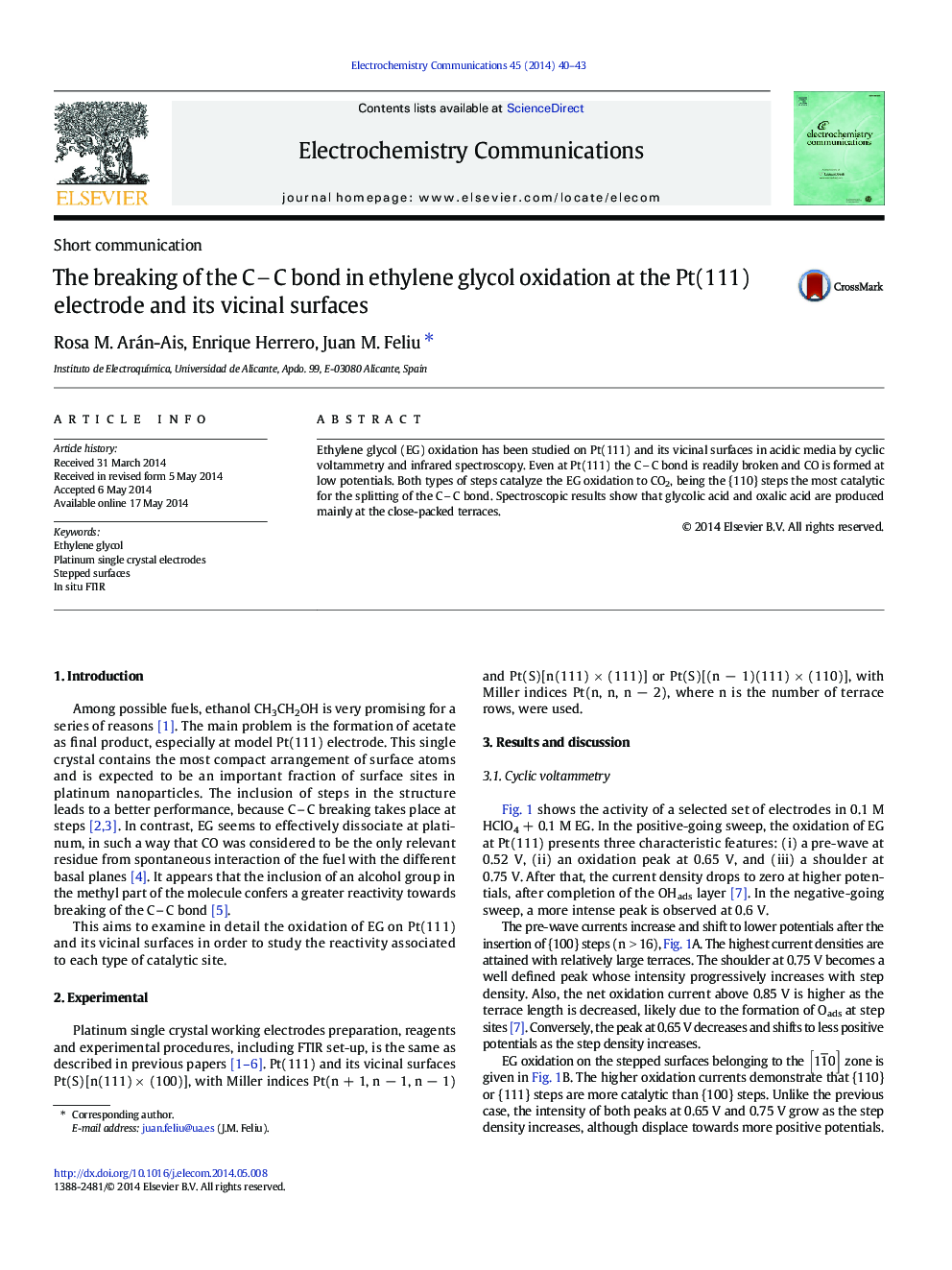| Article ID | Journal | Published Year | Pages | File Type |
|---|---|---|---|---|
| 178998 | Electrochemistry Communications | 2014 | 4 Pages |
Abstract
•Pt(111) electrode is very active for the oxidation of ethylene glycol.•The breaking of the CC bond takes place on the (111) terraces.•Steps are very active for this oxidation.
Ethylene glycol (EG) oxidation has been studied on Pt(111) and its vicinal surfaces in acidic media by cyclic voltammetry and infrared spectroscopy. Even at Pt(111) the CC bond is readily broken and CO is formed at low potentials. Both types of steps catalyze the EG oxidation to CO2, being the {110} steps the most catalytic for the splitting of the CC bond. Spectroscopic results show that glycolic acid and oxalic acid are produced mainly at the close-packed terraces.
Related Topics
Physical Sciences and Engineering
Chemical Engineering
Chemical Engineering (General)
Authors
Rosa M. Arán-Ais, Enrique Herrero, Juan M. Feliu,
